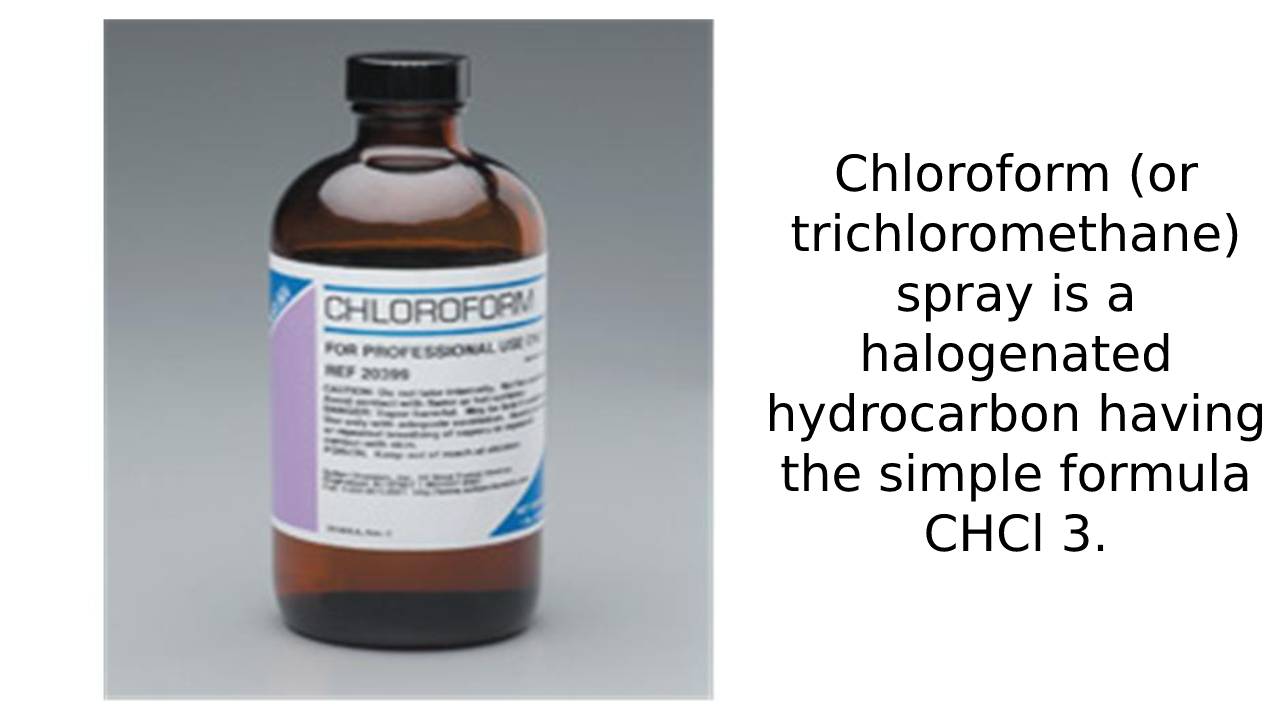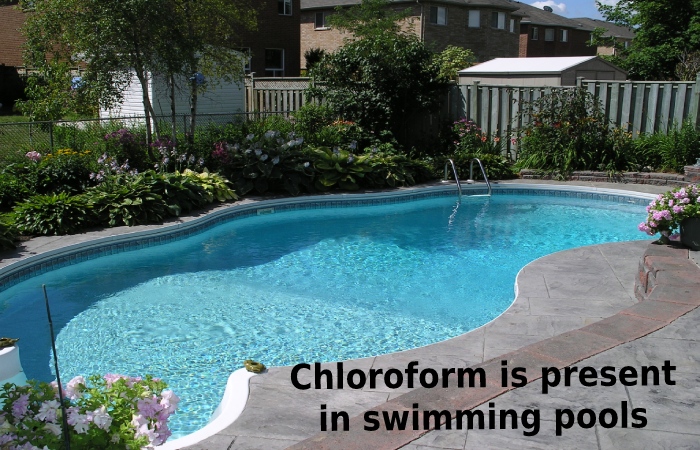
Table of Contents
Chloroform Spray
Chloroform (or trichloromethane) spray is a halogenated hydrocarbon having the simple formula CHCl 3.
It was discovered almost simultaneously by Samuel Guthrie (United States), Justus von Liebig (Germany), and Eugène Soubeiran (France) in 1831.
It comes as a liquid colorless and highly volatile with a characteristic ethereal odor.
Chloroform in the environment tends to escape into the atmosphere due to its high volatility and low adsorption capacity.
Its natural origins are mainly seawater (by certain algae and bacteria ) and the transformation of rocks.
The primary anthropogenic source is water treatment stations, by chlorine on organic matter in surface water.
Small amounts of chloroform are present in tap water, food, air exterior, and interior.
Chloroform spray – History and Uses
- Chloroform was used as an anaesthetic to relieve pain and put the injured to sleep.
- Queen Victoria used it during childbirth.
- And the United States used it extensively during the Civil War.
- After that, Manufacturers used it in synthesizing chlorodifluoromethane, or HCFC-22, as a refrigerant.
- Europe banned this substance in 2004 in household appliances, then in 2015 for all uses.
Properties of Chloroform spray
- Some of the excellent and destructive properties of chloroform are: it is irritating to the eyes, bronchial tubes and fatal in high doses.
- It is a neuro-, a hepato-, and a cardio-toxic, carcinogenic (classification B), probably teratogenic.
- But it is also an excellent solvent, a synthetic intermediate, and an anesthetic that allowed patients to avoid pain for nearly a century.
- Claude Bernard proposed from 1860 a morphine/chloroform combination, known as balanced anesthesia.
- Doctors combine various anaesthetics, morphine, and muscle relaxant and administer intravenously or by inhalation.
- It is present in swimming pools, especially when chlorination is combined with water treatment by UV lamps or solar radiation.

- Chloroform itself is the precursor, in the presence of oxygen and under the influence of UV radiation, of a highly toxic compound, phosgene.
- This undesirable production in workplaces (building, paper industry, etc.), those open to the public, particularly children, led to stringent regulations.
- The reaction of chloroform with a base such as sodium hydroxide provides CCl 2 dichlorocarbene.
- Another highly reactive intermediate quickly reacts with numerous unsaturated functions, leading to an additional carbon atom.
- It is an extraction solvent in the pharmaceutical, agri-food, cosmetic industries, and polymer industry.
Dangers of chloroform spray
- It isn’t delightful to the skin and the eyes. The inhalation of vapors (3-minute exposure at concentrations of 920 ppm ) causes vertigo and dizziness.

- In high doses, chloroform is toxic to the heart, central nervous system, and liver.
- Although it is not flammable, Heat decomposes chloroform into hydrogen chloride and phosgene, gas corrosive and toxic.
- It reacts violently with aluminum, magnesium, alkali metals, strong bases such as soda and potash, and alkaline alcoholates.
Current uses of chloroform
- They use it to manufacture chlorofluorinated hydrocarbons ( Teflon) and extract essential oils and alkaloids.
- Pharmaceutical industries use it in the extraction of antibiotics, hormones, nicotine, quinine, vitamins.
- However, it acts as a solvent and purifying agent in the plastics industry.
Applications of chloroform in surgical operations

- Professor Simpson seems to have deserved science in making known the applications of chloroform in surgical procedures.
Also Read: Feeling of Fatigue After Eating – How to combat fatigue after eating?
Self-Tanner for fair skin – How to choose? Best Self Tanners in The Market
Lip Injections – Advantages, Results, How long does The Lip Filler Last?


